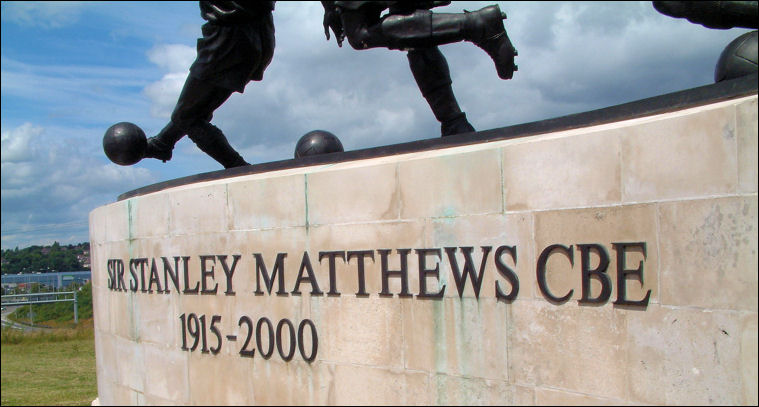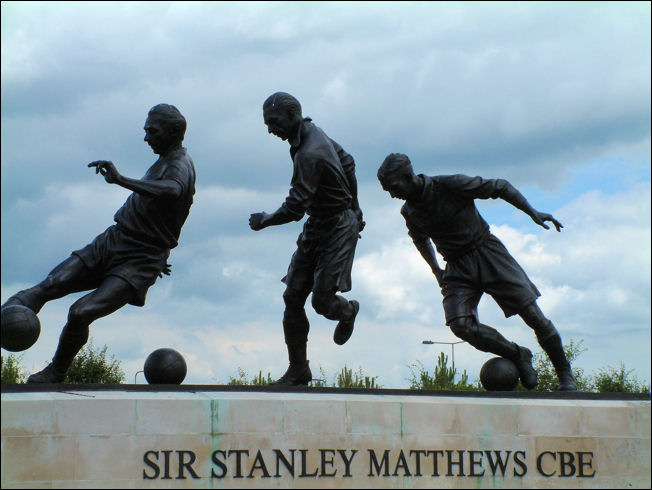![]()
|
|
|
|
|
Stoke-on-Trent - photo of the week |
|
|
Statue
of the footballer Stanley Matthews
located at the Britannia Stadium -
the Stoke City football ground
Former England manager Kevin
Keegan, helped Sir Stanley's daughter, Jean Gough,
take the wraps off at Stoke City's Britannia Stadium on Saturday 27th October
2001.
|
Matthews was born February 1st 1915 in a terraced house in Seymour Street, Hanley, Stoke-on-Trent, Staffordshire. He was the third of four sons born to local boxer Jack Matthews (aka The Fighting Barber of Hanley). The first professional
footballer to be knighted - Sir Stanley Matthews was the most renowned
player of modern times. In total, Matthews made 54 official England appearances scoring 11 goals (as well as 29 unofficial wartime appearances with 2 goals). His England career is the longest of any player ever to play for the side, stretching from his debut on 29 September 1934 to his last appearance on 15 May 1957, almost 23 years later, an appearance which, as of 2006, makes him the oldest player ever to appear for England. In 1956, Matthews won
the first-ever European Footballer of the Year (Balon d'Or) award, and the
following year was awarded a CBE in the New Year's honours list.
|

Sir Stanley Matthews CBE
1915-2000


The three nine-foot statues were made by local artists, showing Sir Stanley at different stages of his career, which spanned more than 30 years. The final resting place for the statues was Stoke City's new home Britannia Stadium. However, the statues point towards the club's old Victoria Ground, where Sir Stanley played. The statues themselves were fashioned from local clay before being cast. The creation of the statues took a whole year to complete.
One of the sculptors works on a detail of the clay model photo: BBC Stoke & Staffordshire
|

Britannia Stadium - the
Stoke City football ground
|
He died in February 2000, just after his 85th birthday, and was cremated following a funeral service in Stoke a week after his death. His funeral was attended by many footballing greats, and his ashes were buried beneath the centre circle of the Britannia Stadium. |